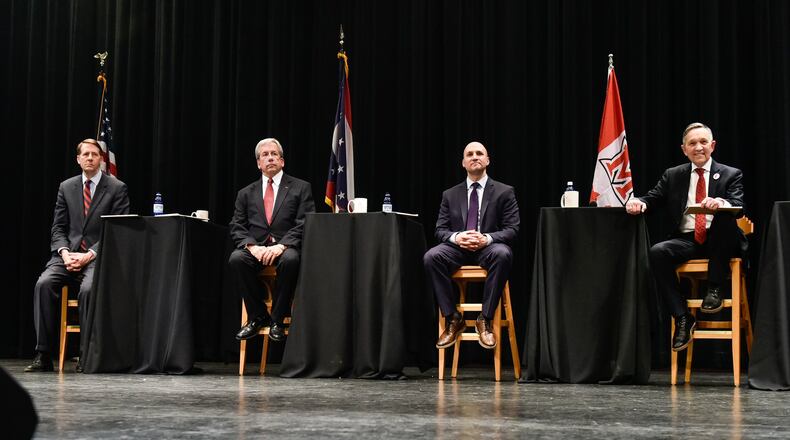Miami political science professor John Forren, chair of the Justice and Community Studies department in Hamilton, said there are some traditional events being planned for the fall semester, but they’re already planning for virtual activities, including a virtual discussion.
LOCAL NEWS: West Chester police chief, trustees explain reasoning for maintaining 30-day curfew
"Necessity is the mother of invention, I guess," said Forren, who's also executive director of the Menard Family Center for Democracy at Miami. "We're trying to figure out what we can and can't do."
But the conversation is “as important as ever because the events of the past couple of weeks have shown how important it is to talk.”
After the death of George Floyd, a black man who died in police custody in Minneapolis, Minn. during a May 25 arrest, people responded with Black Lives Matter protests, both calling for justice in Floyd’s death and an end to stop systemic racism.
Forren said this year, a presidential election year, is important as “we have some serious social issues that we have to look at and we need to talk about.”
“We need to try to create some common ground,” he said. “We need to find ways to make sure we can engage with those issues and those topics. Even if we can’t get in the same physical space, we can find ways to dialogue and connect people with one another.”
That community dialogue will be vital to invoke change, Forren said, but “it’s important that they have access to accurate information” pertaining to not only the candidates but also the community issues and problems.
Forren said “there’s just something that feels different about this moment” as there have been sustained protests since Floyd’s death three weeks ago, and that “suggests a level of engagement and interest that is pretty extraordinary.”
Young and old alike continue to march and kneel in support of the Black Lives Matter movement, a human rights campaign that started in 2013 as a campaign against racism against African Americans. It’s believed by Forren and others that the youth will not only come out in high numbers this November but could be the difference in the presidential and congressional races.
LOCAL NEWS: Butler County protests: Police and city officials have been active in speaking, interacting
Older voters historically have higher voter turnout numbers than those under 30. However, in the 2018 midterm election, the under 30 voting population had the highest voter turnout in 25 years, and movements led by the youth that year are partly credited for the spike, according to the Associated Press.
“The level of activism we’re seeing now, it strikes me as a different kind of activism,” Forren said. “There’s a depth to the engagement here that I think is very likely to have young people show up to vote in the fall.”
About the Author

